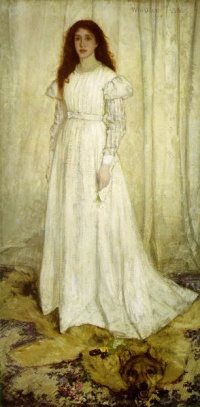1862
From The Art and Popular Culture Encyclopedia
(Difference between revisions)
| Revision as of 07:06, 26 May 2008 Jahsonic (Talk | contribs) ← Previous diff |
Revision as of 22:11, 8 August 2008 Jahsonic (Talk | contribs) (→Art and culture) Next diff → |
||
| Line 2: | Line 2: | ||
| {{Template}} | {{Template}} | ||
| == Art and culture == | == Art and culture == | ||
| - | *[[Fyodor Dostoevsky]] visits the [[Crystal Palace]] | + | *[[Fyodor Dostoevsky]] visits [[the Crystal Palace]] |
| *[[Swinburne]] meets [[Richard Monckton Milnes]], who introduced him to [[Richard Burton]] and to the works of the [[Marquis de Sade]]. | *[[Swinburne]] meets [[Richard Monckton Milnes]], who introduced him to [[Richard Burton]] and to the works of the [[Marquis de Sade]]. | ||
| *[[Bohemianism ]] quote: "The term 'Bohemian' has come to be very commonly accepted in our day as the description of a certain kind of literary gipsey, no matter in what language he speaks, or what city he inhabits .... A Bohemian is simply an artist or littérateur who, consciously or unconsciously, secedes from conventionality in life and in art." ["[[Westminster Review]]"] | *[[Bohemianism ]] quote: "The term 'Bohemian' has come to be very commonly accepted in our day as the description of a certain kind of literary gipsey, no matter in what language he speaks, or what city he inhabits .... A Bohemian is simply an artist or littérateur who, consciously or unconsciously, secedes from conventionality in life and in art." ["[[Westminster Review]]"] | ||
Revision as of 22:11, 8 August 2008

James Whistler's painting Symphony in White, No. 1: The White Girl (1862) caused controversy when exhibited in London and, later, at the Salon des Refusés in Paris. The painting epitomizes his theory that art should essentially be concerned with the beautiful arrangement of colors in harmony, not with the accurate portrayal of the natural world.
|
Related e |
|
Featured: |
Contents |
Art and culture
- Fyodor Dostoevsky visits the Crystal Palace
- Swinburne meets Richard Monckton Milnes, who introduced him to Richard Burton and to the works of the Marquis de Sade.
- Bohemianism quote: "The term 'Bohemian' has come to be very commonly accepted in our day as the description of a certain kind of literary gipsey, no matter in what language he speaks, or what city he inhabits .... A Bohemian is simply an artist or littérateur who, consciously or unconsciously, secedes from conventionality in life and in art." ["Westminster Review"]
- Karl Ulrichs, speaking at a conference of Jurists in Munich, becomes the first person in modern times to declare himself homosexual. Although he used the term, "Urning," Ulrichs continued to speak out for gay rights.
- Elizabeth Siddall died of an overdose
Literature
- Salammbô by Gustave Flaubert
- 20 poems from the future Spleen de Paris collection by Charles Baudelaire are published
- Les Misérables by Victor Hugo
- Lady Audley's Secret by Mary Elizabeth Braddon
Art
- The White Girl by Whistler
- The Turkish Bath by Jean Auguste Dominique Ingres
- La Source by Gustave Courbet
- The Cedars of Lebanon by Edward Lear
Technology
- Ponti's Megalethoscope
Births
- Gustav Klimt (1862 - 1918)
- Claude Debussy (1862 - 1918)
- Rupert Carabin (1862 - 1952)
- Arthur Schnitzler (1862 - 1931)
- Maurice Barrès (1862 - 1923)
- Joseph Carey Merrick (August 5, 1862 - April 11, 1890), known as "The Elephant Man",
Deaths
- Henry David Thoreau (1817-1862)
Unless indicated otherwise, the text in this article is either based on Wikipedia article "1862" or another language Wikipedia page thereof used under the terms of the GNU Free Documentation License; or on research by Jahsonic and friends. See Art and Popular Culture's copyright notice.

